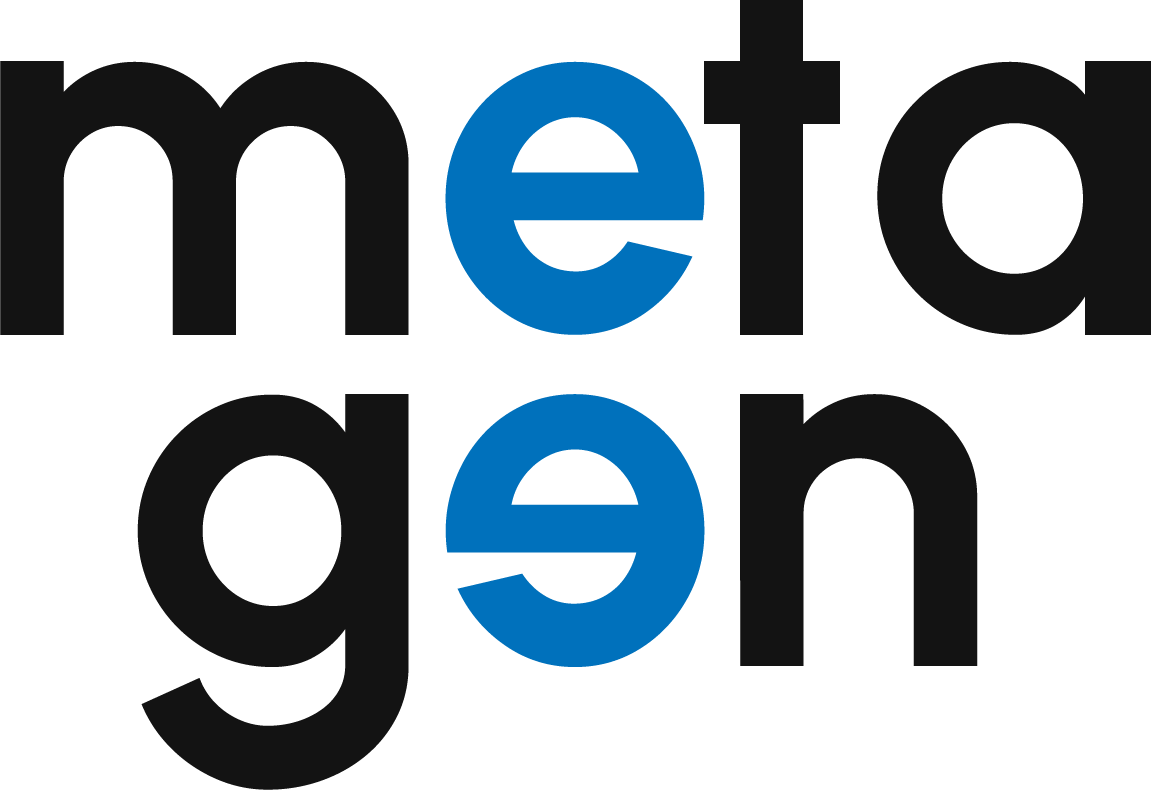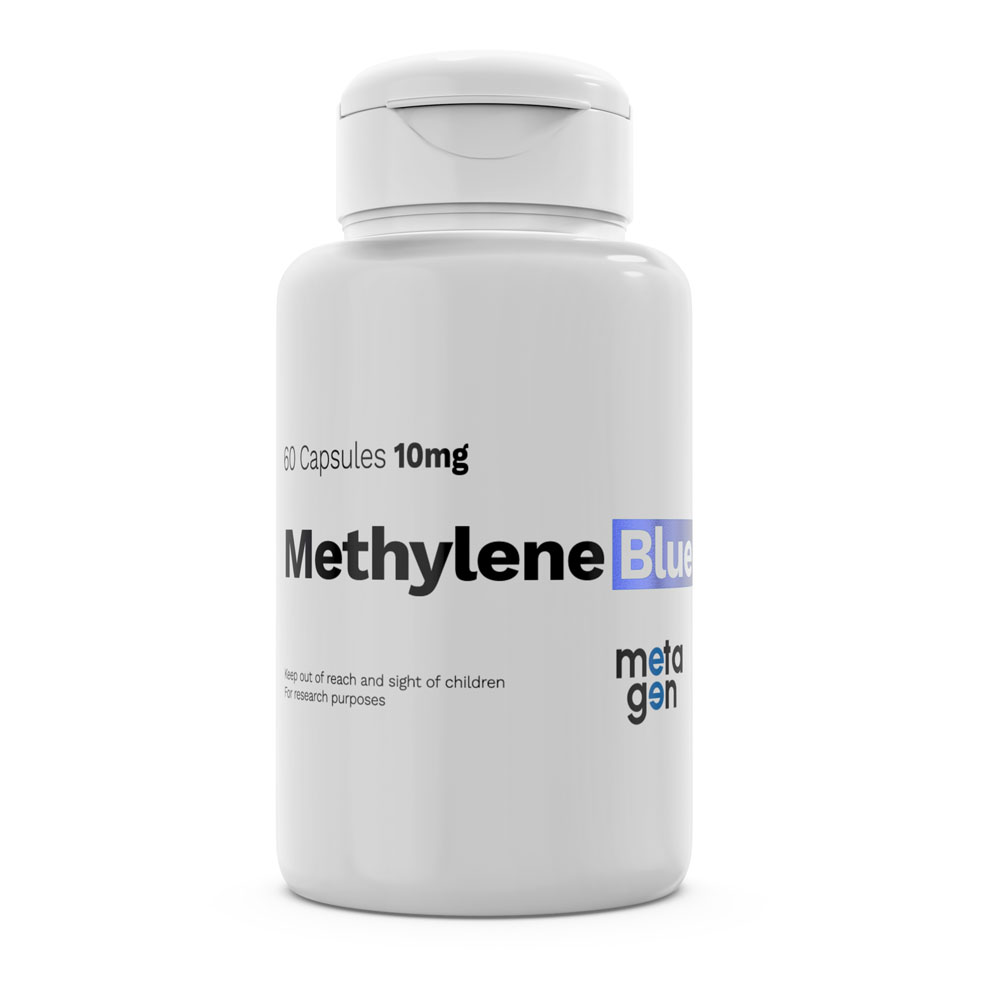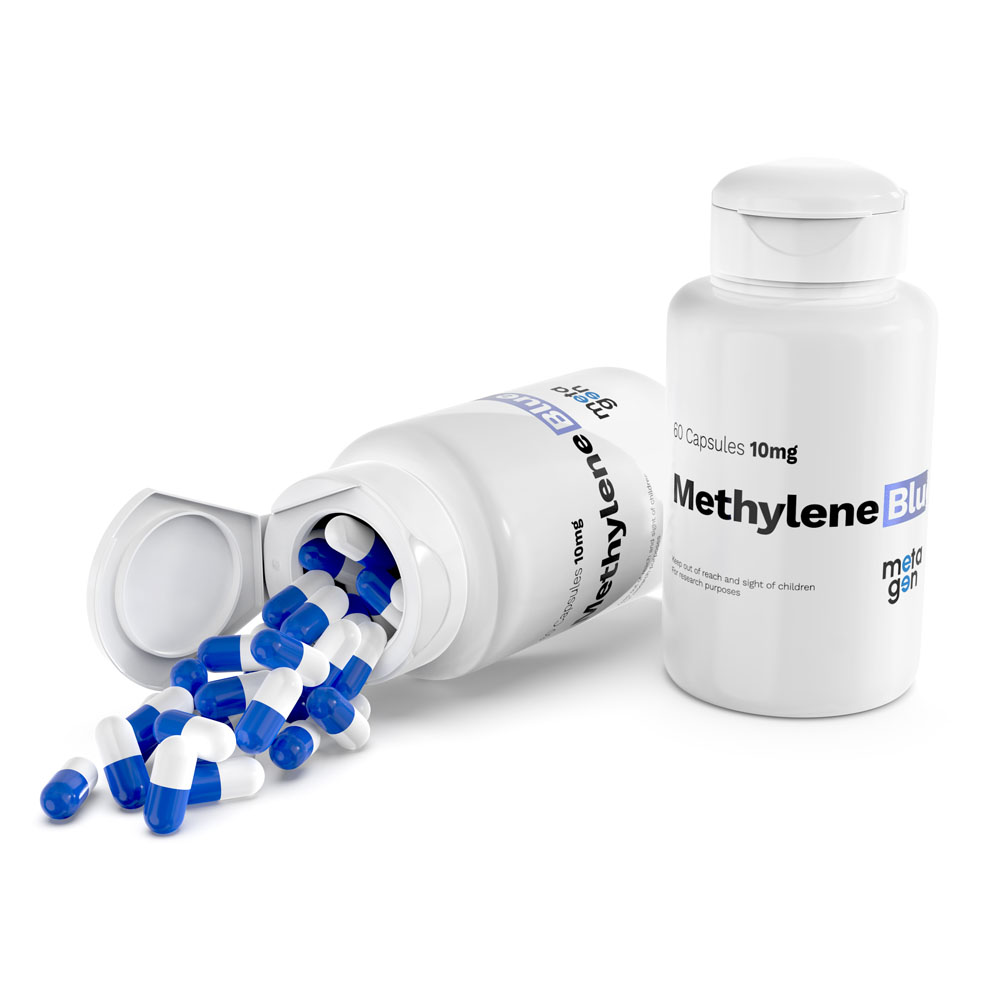Methylene Blue: Cellular Energy & Neuroprotection
Enhance Mitochondrial Function, Support Brain Health, and Combat Oxidative Stress
Methylene blue (methylthioninium chloride) is a historic therapeutic dye, first synthesized in 1876 and FDA‑approved for treating conditions like methemoglobinemia and cyanide poisoning. In low oral doses, it acts as a potent mitochondrial electron shuttle and antioxidant, helping cells generate ATP more efficiently and reducing reactive oxygen species (ROS).
This unique dual role has sparked increased interest in research into its potential to support energy metabolism, cognitive performance, cellular resilience, and longevity, especially in the context of neurodegenerative disorders and aging.
Key Potential Benefits
- Mitochondrial Energy Support – Facilitates efficient electron transport in mitochondria, boosting ATP production and reducing oxidative damage.
- Neuroprotective & Cognitive Effects – Crosses the blood-brain barrier to reduce neuroinflammation and support memory, attention, and executive function.
- Skin Health & Cellular Longevity – Supports fibroblast proliferation and delays cellular aging in skin models.
- Antimicrobial & Photodynamic Use – Serves as a photosensitizer in treatments against infections and cancer.
- Well‑Established Safety at Low Doses – Long-term oral use (~4 mg/kg/day) has been safely documented in clinical trials.
Research Sources
- Alternative Mitochondrial Electron Transfer for the Treatment of Mitochondrial Dysfunction
- Methylene blue modulates functional connectivity in the human brain
- Multimodal Randomized Functional MR Imaging of the Effects of Methylene Blue in the Human Brain
- Mitochondria as a target for neuroprotection: role of methylene blue
- RSNA press release summarizing the Radiology trial
Technical Information
CAS Number: | 61-73-4 |
PubChem CID: | 6099 |
Formula: | C16H18N3S.Cl / C16H18ClN3S |
Synonyms: | methylene blue, 61-73-4, Basic blue 9, Methylthioninium chloride, Solvent blue 8 |


